Angst and Order, David Anfam

“There is no happy art. Art is always about the blues
and life’s cruelty. All great art is tragic.”
— Philippe Vandenberg, 2008
Picture a small kingdom hemmed in by a narrow strategic seaway on one side, a considerable region frequently below sea level to the north, and two far bigger countries with a history of dogged warfare between them on its remaining borders. Its greatest artistic flowering ended some four centuries ago, and it did not even become an independent state until 1830, when its formation straddled a perhaps irreconcilable boundary between two diametric cultures. In that same century, it presided over one of history’s most monstrous colonial dominions (not to mention a bloody military engagement near its capital-to-be, whose name has become synonymous with all-encompassing defeat / victory), and in the next, it was itself ferociously plundered twice by an invading army. On the first occasion, a single protracted land battle resulted in casualties and deaths numbering around half a million people. On the second, it witnessed the evacuation of liberating military forces that appeared then to signal a turning point—for the apocalyptic worst—in the trajectory of Western civilization. This has led to its sobriquet as “the battlefield of Europe.” More recently, it has made headlines with several ghastly mass murders. (i) And this is an area less than the size of, at random, the state of Maryland. However, all lands have their good and bad: the present one is no exception.
Thus, from here too have arisen, from the medieval age to modern times, some of the finest painters to grace the history of Western art, not to mention much remarkable architecture. There stand towns whose beauty and storied intricacy hold their own against those anywhere in the globe. Also, cities of great cultural richness, (ii) as well as landscapes with a quiet, ordered charm. Food and drink offering legendary heartiness and, when it comes to details, at least one Hollywood movie star, a brilliant detective story writer, and even a variety of marble that is sui generis in its distinction. (iii) And, last but emphatically not least, the artist Philippe Vandenberg.
If Vandenberg’s sensibility had not been acutely attuned to history’s terrors and the concomitant hopes for human redemption from it, this potted account of Belgium—by now, where else?—would be redundant. (iv) Notwithstanding a deep grasp and engagement with art beyond his homeland, especially that of the postwar United States, Vandenberg—born in Ghent and whose final studio was in Brussels—inevitably breathed the air, as it were, of his ambience. Aptly for a society in the main Catholic, his creative vision moved between earthly horrors and lofty spirituality. This foundation underwrites its special intensity.
As such, Vandenberg belongs to a distinguished line of modern creators who have sought a difficult salvation through art in the wake of Friedrich Nietzsche’s proverbial “death of God.” Scant wonder that Vincent van Gogh waxed prominent in Vandenberg’s pantheon. Common to visionaries of this ilk is a tendency to blur the divisions between art and life so that each blends into an enveloping whole. From beginning to end, Vandenberg’s vision returned—albeit in strikingly diverse visual cycles that accommodated renewals and breaks—to lifelong themes. As the artist avowed, “While there is a common thread running through – out my work, there are also many stylistic ruptures.” (v) In short, he was multiform yet consistent.
Significantly, Vandenberg targeted the Belgian matrix and evil abroad (the double entendre is intentional) in what was perhaps an initial bid at mapping his identity, Une scène très intime et secrète de la vie de l’empereur [A Very Intimate and Secret Scene in the Life of the Emperor, 1974; fig. 1]. The painter’s arm rests on Napoleon’s leg; behind stands Leopold II (tyrant of the Congo) alongside Adolf Hitler (would-be tyrant of the world); and two dogs attend them. The pictorial style is flat and orderly, rendering the content clear. Namely—since the two standing figures are metonymic—that Vandenberg’s inheritance was twofold, Belgium with its past and (Europe’s) fractured twentieth century. (vi) Two further points seem salient. First the pun on “Leo[pold]” / “lion,” a simple enough twist that nevertheless presages his subsequent complex concern with language. Second, the veritable obsession with a wicked, fallen world and its necessary transfiguration. Henceforth, Vandenberg’s odyssey triangulated these three axes, as if they were almost the nuclear structure of his imaginative DNA. Indeed, is it a coincidence that the nodal frameworks and lattices in the works completed during his final decade, such as Mama svastika. Les villages (Mama Svastika. The Villages, 1997–2003), evoke a Brussels landmark, the Atomium [fig. 2]? To the knowing eye, this structure highlights at once the forces of construction and destruction, good and evil—an apt rebus for Vandenberg’s ubiquitous dialectic.

Fig. 1 Philippe Vandenberg, Une scène très intime et secrète de la vie de l’empereur (A Very Intimate and Secret Scene in the Life of the Emperor), 1974
A local note may also inform Vandenberg’s visual topos insofar as its dramatis personae inhabit gray, morbid, and hard-to-define sites, typified by Mama Svastika Revisited III [2002–03; fig. 3]. From at least Georges Rodenbach’s tellingly titled novel Bruges-la-Morte (1892) onwards, perceptive viewers have noticed this aspect to parts of Belgium, including Brussels, which to many feels an oddly indefinable city. (vii) In his poem “Brussels in Winter,” W. H. Auden encapsulates this anonymous angst:
Wandering through cold streets tangled like old string,
Coming on fountains rigid in the frost,
Its formula escapes you; it has lost
The certainty that constitutes a thing. (viii)
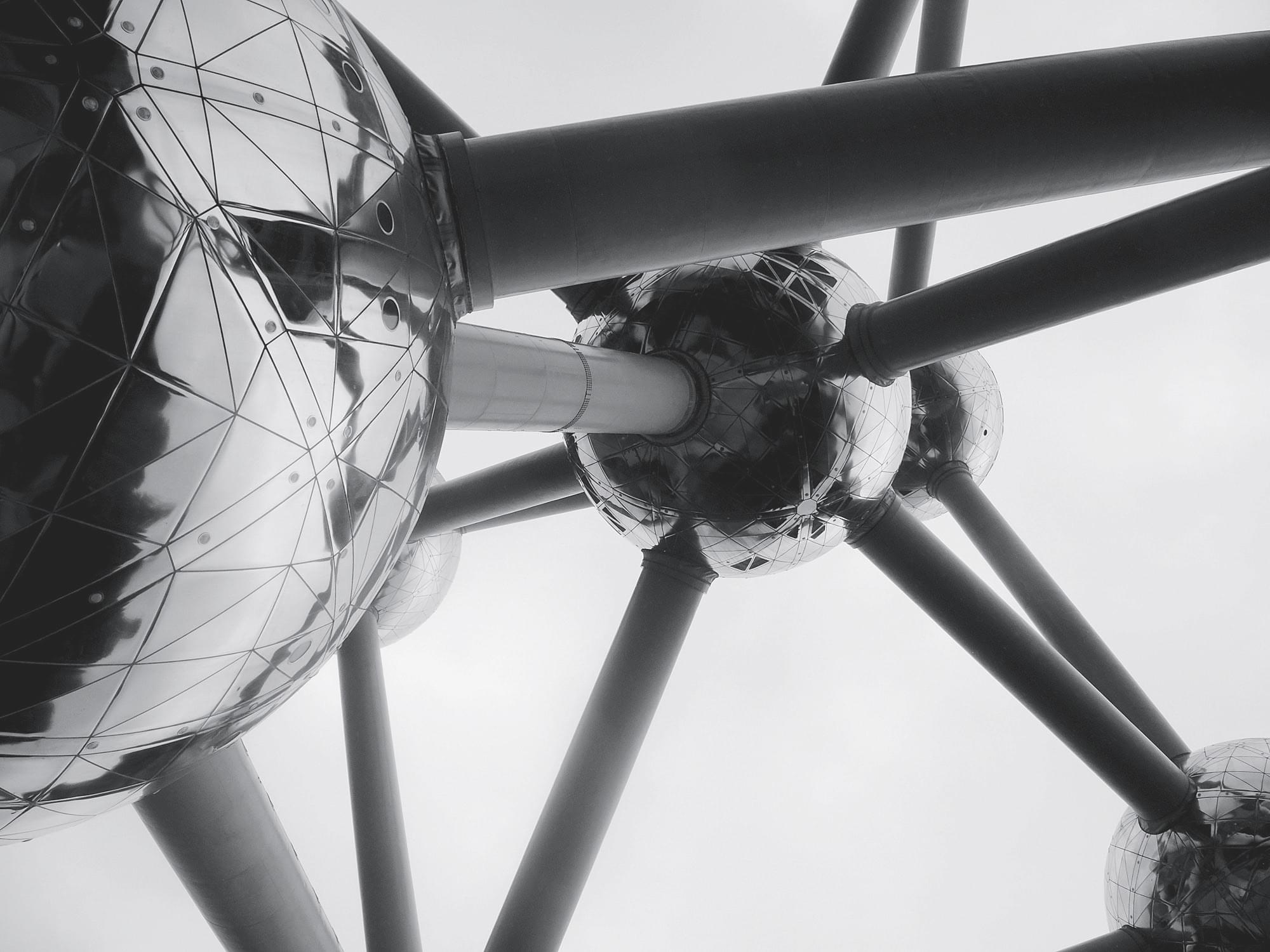
Fig. 2 The Atomium in Brussels, built for the World Expo in 1958
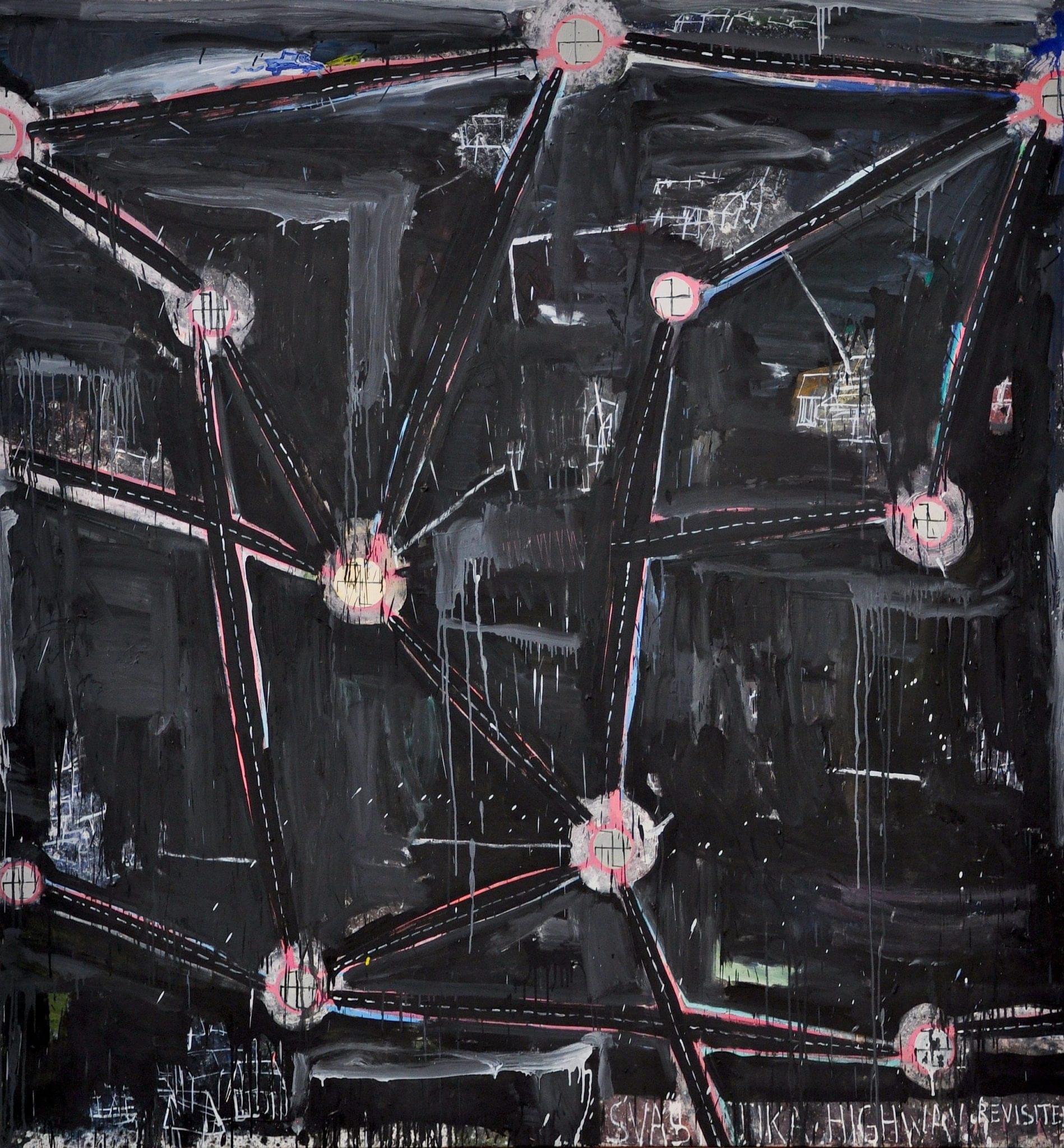
Fig. 3 Philippe Vandenberg, Mama Svastika Revisited III, 2002-03
More extreme, given Vandenberg’s numerous attacks upon Nazism (evident in the aforementioned painting and remember that starting in 1942 Jews were sent on a well-oiled railroad network across Europe from Mechelen to Auschwitz), (ix) is the memorable documentary photograph of this perverse ideology’s criminals stripped to their evil banality [1944; fig. 4]. But we must not marginalize Vandenberg by fly-papering him to a rootless Belgian milieu alone, important as that may have been, especially in light of his concept of the artist as a restless drifter. On the contrary, his cosmopolitan sightlines ranged far afield. Dialogues with contemporary European art—extending from, say Asger Jorn and Pierre Alechinsky to Francis Bacon with occasional nods towards Anselm Kiefer and Sigmar Polke—sometimes dot his strategies. However, Vandenberg’s true soulmates stemmed instead from both much longer ago and recent American sources, notably Abstract Expressionism, which had a crucial impact on him while in New York in 1978.
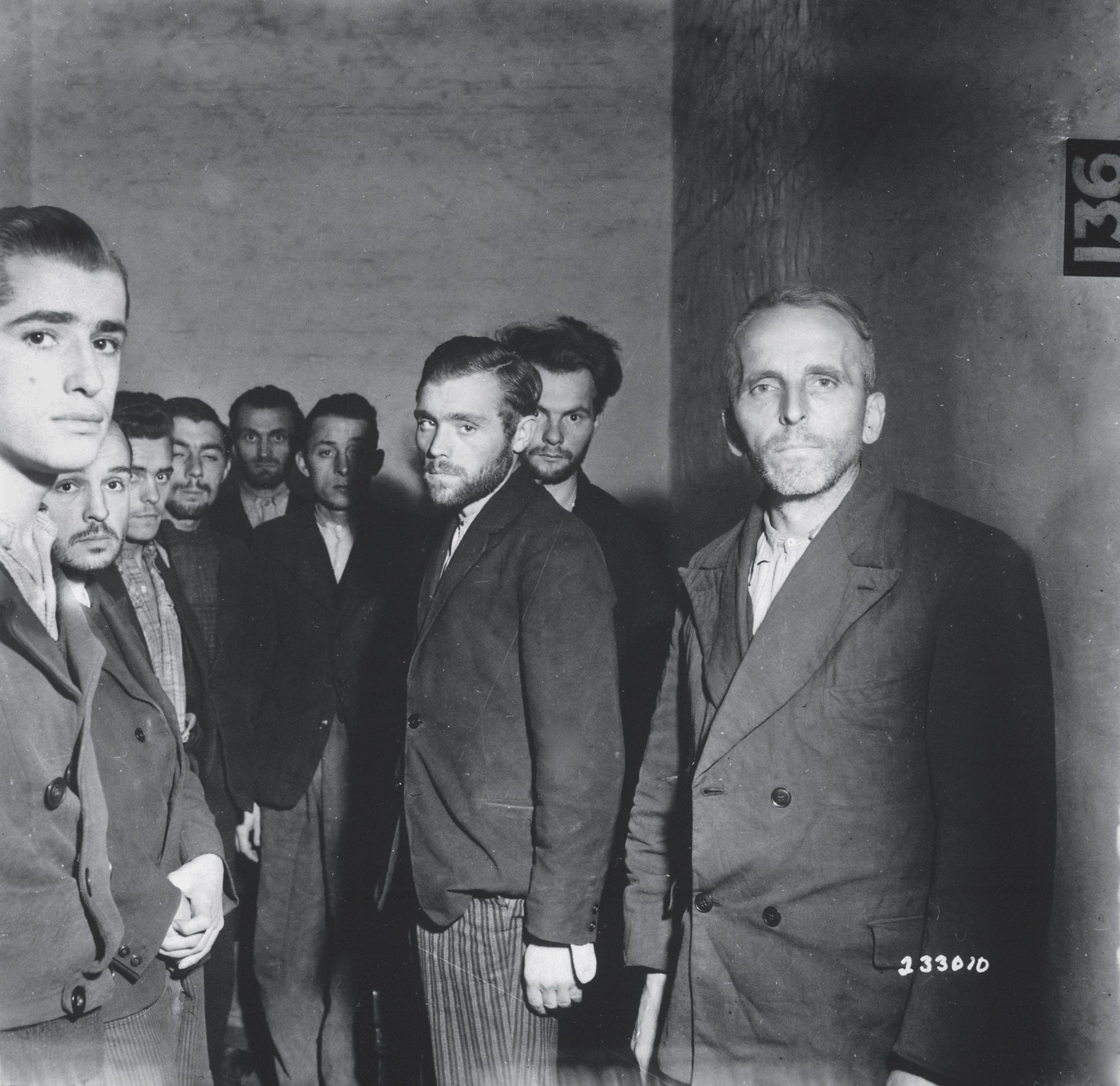
Fig. 4 German Gestapo agents arrested after the liberation of Liège, Belgium, are herded together in a cell in the citadel of Liège, October 1944
In the Netherlandish Old Masters, above all Hieronymus Bosch and Pieter Bruegel the Elder, key elements occur that fueled Vandenberg’s pictorial lexicon. (x) An obvious link between him and Bosch is their theological dimension. In the former this yields an explicit mirror of the age. As Vandenberg put it:
… the medieval population … could unlock them. Bosch’s paintings
were commissioned by the churches in which they were destined
to hang … People went to church and saw, in those paintings, what
might or might not happen in their lives. (xi)
Again, fateful images and existence commingle. What further reinforces this synthesis are the bird’s-eye perspectives found in, for example, Bosch’s Garden of Earthly Delights [1503–15; fig. 5] and amplified by such Bruegels as Christ Carrying the Cross (1564) and The Triumph of Death (ca. 1562–64).

Fig. 5 Hieronymus Bosch (1450-1516), The Garden of Earthly Delights, 1503-15
The high viewpoint infiltrated Vandenberg’s mid-career compositions, making us, willy-nilly, hapless supernal witnesses to diurnal human torments and urges, which are thus also imbued, by their enforced selfconsciousness, with what Vandenberg elsewhere designated as “honte” (“shame”), (xii) typified by the Erotic Drawings / Indonesia (1996) and The Carriers of Penises (2000), just as the torturer and his subject in La scie (1997–98) mimic a copulating couple. (In La nuit désire la reine, le roi perd son sang [The Night Desires the Queen, the King Loses His Blood, 1994–96] the requisite ladder between the two possibly alchemical spheres, above and below, snaps in darkness.) This mise-en-scène reinvents the venerable Netherlandish paradigm regarding the theatrum mundi, or Theater of the World, where the painter’s omniscience of folly, carnal debasement, and mortality stands proxy for the old, watchful Christian God’s eye in the sky. (xiii) The disembodied eyes in De Gids (The Guide, 1998), the stacked eyes in the drawings Vandenberg did for the volume Black a Garden for St. John’s Millbrook (2008), and so forth represent its legacy. We face a specular realm, heavy with its Freudian psychological burdens tied to subjectivity, the unconscious, and desire. Nor is the horror vacui associated with the theatrum mundi unique to Bosch and Bruegel. Perhaps following their lead, Albrecht Dürer added a graphic violence to it, as well as its maker’s own presence, in a fusion that looks ahead to Vandenberg’s work. Martyrdom of the Ten Thousand [1508] places Dürer at the center, echoing his Self-Portrait (1500), wherein he identifies with God. (xiv)
Flash forward almost half a millennium and in De profetieën IV, portret van Guillaume Vandenberghe [The Prophecies IV, Portrait of Guillaume Vandenberghe, 1993–94; fig. 7] Vandenberg elevates one of his two sons as a seer—in his frontality, pyramidal long hair, and even the flash of white at his neckline, he echoes Dürer’s indelible portrait bust. Yet this spiritual gaze is embedded in brute matter, encrusted pigment. To be sure, Bosch and Bruegel’s earthy dramas probably seeded this carnality. Their latter-day heir interrogated it.

Fig. 6 Albrecht Dürer (1471-1528), Martyrdom of the Ten Thousand, 1508

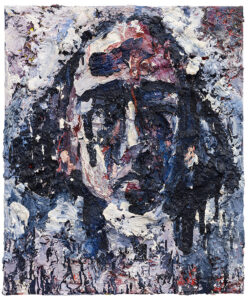
Fig. 7 Philippe Vandenberg, De profetieën IV, portret van Guillaume Vandenberghe (The Prophecies IV, Portrait of Guillaume Vandenberghe), 1993-94
Notwithstanding Vandenberg’s admiration for Jackson Pollock, Mark Rothko, and Franz Kline, Willem de Kooning appears even more relevant. Indeed, the latter inherited diverse leitmotifs and iconography from his kinsmen of yore in the Low Countries, Bosch and Bruegel, including a preoccupation with damnation and salvation, the dire human condition, the grotesque, and—in his dexterous hands—a painterly alloverness brimful with activity.15 On the topicality of haptic matter, Vandenberg upends de Kooning’s oft-cited remark that “flesh was the reason why oil paint was invented.”16 Likewise, Vandenberg’s search for purity through aesthetic practice responds to de Kooning’s frustration: “Art never seems to make me peaceful or pure. I always seem to be wrapped in the melodrama of vulgarity.”17 The riveting No title [ca. 2008; fig. 8] answers, on one front, to the Dutchman’s monochrome abstractions during the late 1940s, such as Dark Pond (1948) and Zot [1949; fig. 9]. The raw noun “ZOT” at lower left prefigures Vandenberg’s hybridization of words and images as well as his Christological symbolism—the first painting he saw was a Crucifixion and among his last is another (Untitled [Crucifixion #2], 2005–08).18 The titular word itself means “fool,” a cue to lengthy theological traditions according to which Christ and those who aspire to be Christ-like abjure quotidian cleverness or cunning and therefore, after a fashion, assume a fool’s mantle.19 In a sketchbook (“croquis”) from March 2009 executed near the close of his life, Vandenberg wrote “idiot” seventeen times across a single page. Like de Kooning’s selecting the epitaph on poet John Keats’s gravestone for the title of a 1980 canvas—“[Here lies one] whose name was writ in water”—both artists regarded themselves as tantamount to idiots savants, martyrs to their creative cause. More parallels obtain.
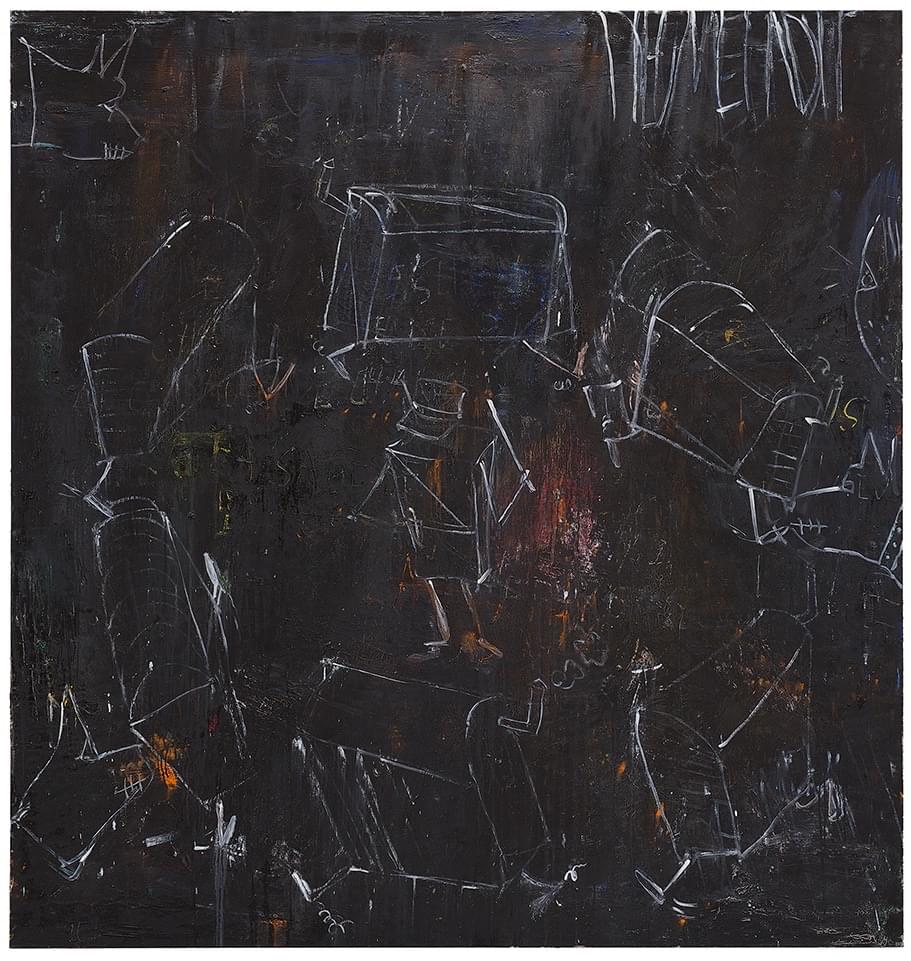
Fig. 8 Philippe Vandenberg, No title, ca. 2008
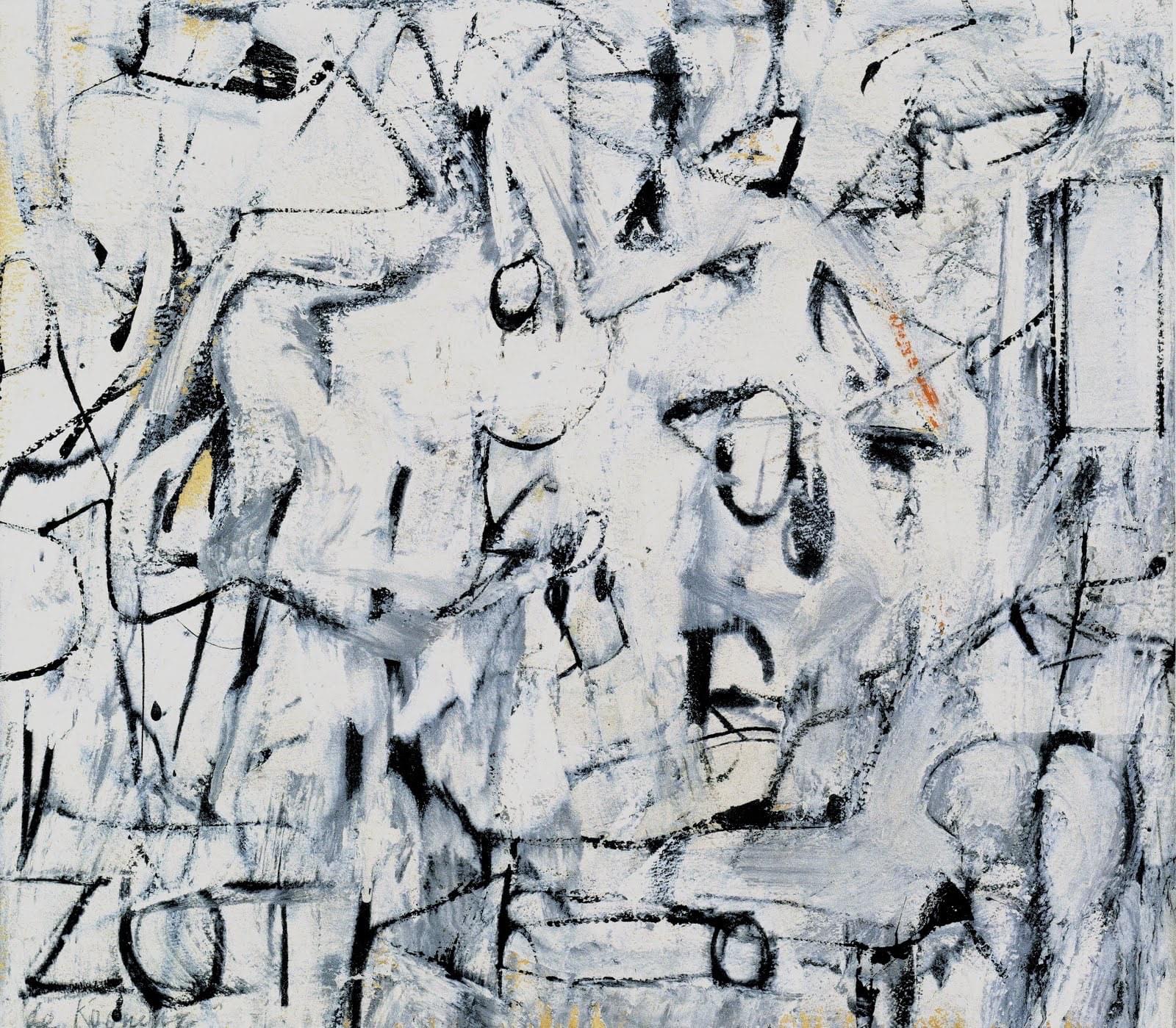
Fig. 9 Willem de Kooning (1904-1997), Zot, 1949
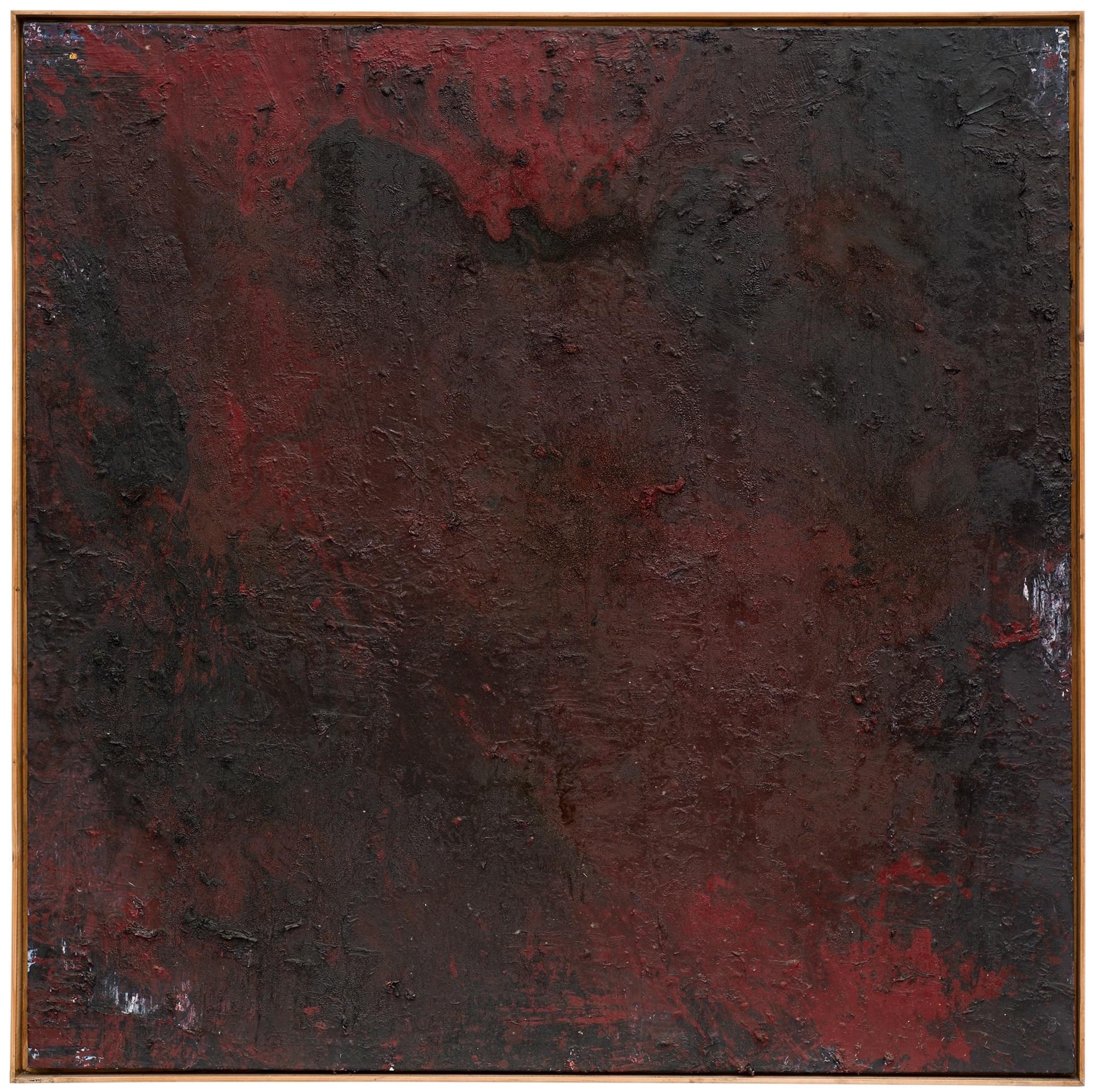
Fig. 10 Philippe Vandenberg, Het zevende zegel II (The Seventh Seal II), 1995
For instance, the disembodied mouths—that betoken dicey desire—in such tableaux as Vandenberg’s Untitled (ca. 1996), where blood mottles the canvas ground, echo those in de Kooning’s syntax, epitomized by Woman I (1950–52), which has a mouth collaged from a magazine advertisement amidst its impastoed palimpsest. (xx) The toothy grins alike are their proverbial Cheshire cats, except turned sardonic and oral-aggressive. By characterizing himself as a “kamikaze,” Vandenberg also drew close to de Kooning’s notion that art entails existential risk and, like the suicidal pilots who made an abrupt leap into the void, suddenly changed his artistic trajectory from representational to abstract several times. “Roaming has always played a major role,” said Vandenberg, “I like to wander; it is incredibly stimulating.” (xxi) Analogously, de Kooning was an inveterate night-wanderer and a self-confessed “slipping glimpser” (xxii) —that is, a nomad, a rover in heart and mind. Lastly, for our purposes, de Kooning’s take on Chaïm Soutine speaks volumes: “There’s a kind of transfiguration, a certain fleshiness, in his work . . .” (xxiii) Whether it be Soutine, de Kooning, or Vandenberg, pigment signifies incarnation. (xiv) Understood semantically, “I / incarnation” veers between the material and the immaterial. At moments the paintings, supremely the encrusted monochromes, almost drown (or is it revel, or both?) in their own, knowingly gross, materiality. By contrast, the drawings skirt the impalpable. Yet, regardless of the medium, Vandenberg’s core dialectic now swings into full view.
On the one hand, pain, cruelty, confusion, melancholia, violence, atrocity, despair, death, and more reign—in a nutshell, all the deleterious, jeopardous emotions and predicaments that may befall us as sentient humans. Our weltschmerz, our innate angst, beginning with what the philosopher Martin Heidegger termed “Geworfenheit,” the fact that we are rudely “thrown” into being. (xxv) On the other hand, a glimpse of what lies beyond the sound and fury. The body dominates the terrestrial quarter. Its subjugation and torments—decapitated and crowned with snails, as in La doctrine II (The Doctrine II, 1999–2001) or, Saint Lawrence–like, racked on a fiery grill, as in La dualité est l’état pur (Duality is the Pure State, 1999)—express sheer abjection. According to another philosopher, Julia Kristeva, the abject’s prison is matter, the horror attendant upon everything that we would, and naturally do, reject from ourselves. Rather than signify, abjection declares or shows. In Kristeva’s reckoning, “A wound with blood and puss, or the sickly, acrid smell of sweat, of decay, does not signify death . . . No, as in true theater, without makeup or masks, refuse and corpses show me what I permanently thrust aside in order to live.” (xxvi) Note there are two sides to the coin here, Thanatos and the life force (otherwise figured as Eros, which drives the sexual aspects, the genitalia, and so forth populating Vandenberg’s repertoire). A fortiori, not just Vandenberg’s incorporation of blood into his media meshes with Kristevan tenets (including her seminal idea that the beleaguered self amounts to a “subject-in-process / on trial”), (xxvii) but also his belief that matter is “filthy stuff.” (xxviii) Moreover, his broader ethos expands the scenario:
The real problem is: what to do with it? How to translate it into light? . . . Our suffering derives not only from the human world, but first and foremost from our being torn between matter and spirit. How to avoid falling into the trap of matter? . . . It explains my great love for drawing. (xxix)
Without darkness, can light shine?
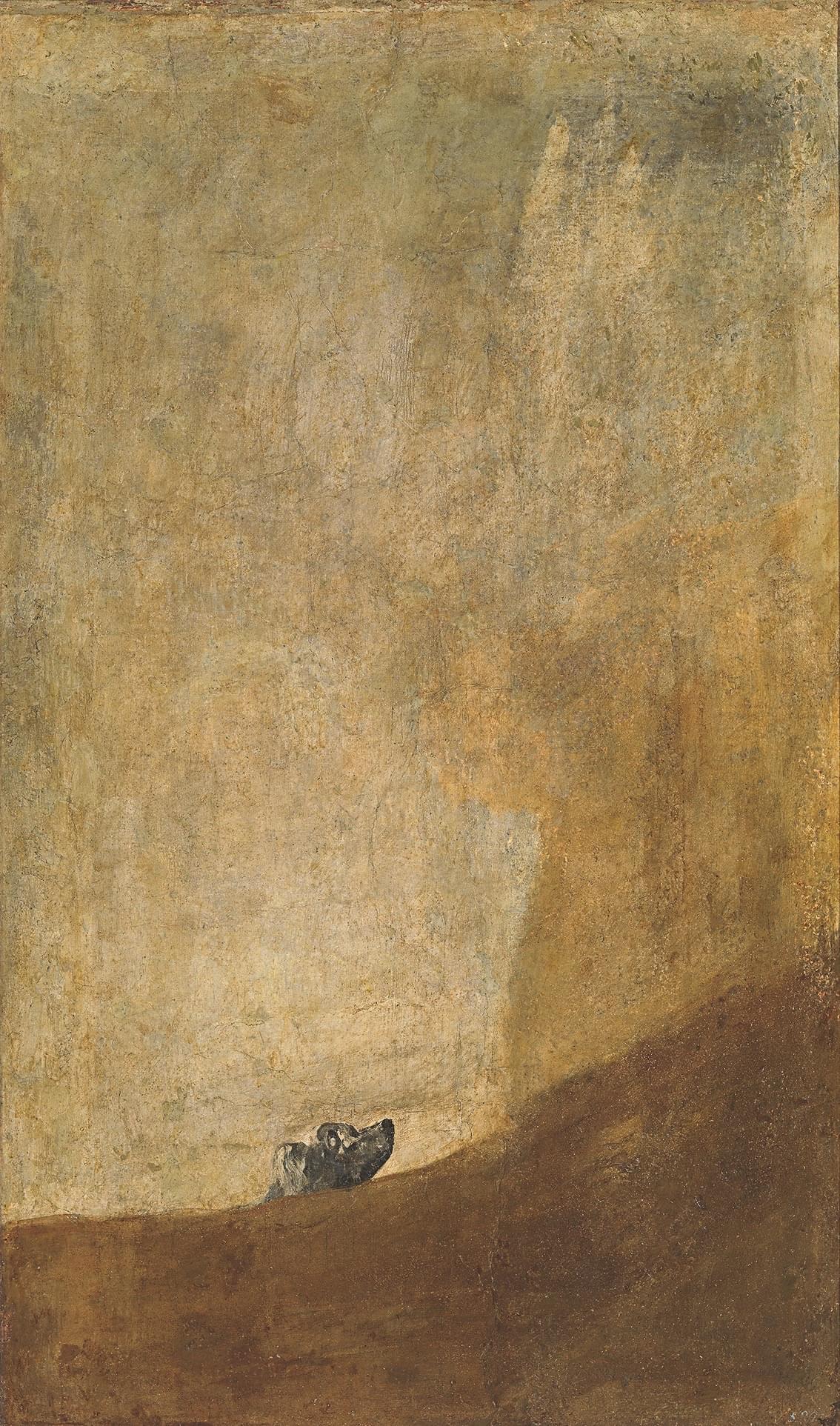
Fig. 11 Francisco Goya (1746-1828), The Dog, ca. 1819-23
Vandenberg’s touchstone for this submergence into the depths was Francisco Goya [fig. 11], evidenced by After the Dog of Goya #3 (2005–07), which could in principle belong to what amounts to an epic triptych of large black-and-white canvases. Their mordant grip confirms that the artist was still at the peak of his powers shortly until his untoward death. Another reference may have been to Clyfford Still. His heavily troweled canvases are, like Vandenberg’s, a Manichaean struggle between light and darkness [fig. 12], which the American described as “life and death merging in fearful union.” (xxx) But it is noteworthy that in the same breath Still declared that their very creation allowed him to “breathe again” and find his own “revelation.” (xxxi) Another admirer of Goya, Still’s conviction paral lels the Spaniard’s tacit resolve that confronting the worst that humankind can do should itself be understood as affirmative. To skip forward, a warning from the AIDS crisis of the 1980s gets the same message across with pithy bluntness: silence = death. (xxxii) Configured thus, Vandenberg’s multifarious use of words and scripts may read as speaking out against silence, his version of Dylan Thomas’s line “Do not go gentle into that good night . . . Rage, rage against the dying of the light.” (xxxiii) Similarly, at one level, Exil de peintre (A Painter’s Exile, 1998–2003) is Vandenberg’s epic counterpart to Van Gogh’s exultant Starry Night (1889). But the crux where submergence and light redux meet is the late monochromes.
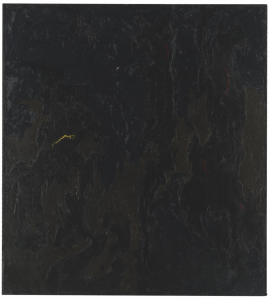
Fig. 12 Clyfford Still (1904-1980), PH-397, 1948-49
Several monochromes are in fact painted over as many as three or four earlier pictures. On that score, they push submergence to the limit, hinting that beneath the substrate lie secrets much better hid. Thereby, inside and outside are subtly confounded. (xxxiv) On another, monochromaticism is inherently multifarious, at once a termination and a new beginning. (xxxv) Rather than devoid of color, the single hue constitutes its apotheosis. Mournful as Vandenberg’s black monochromes may be, they also possess a certain majesty, a triumph of interiority reminiscent of Ad Reinhardt’s mixed meditations on this eschatological tonality:
Negative presence, “darkness,” “a getting rid of,” “blowing out” / Diminishing, beyond shapes, colors, “melting away” / Dematerialization, non-being / “The dark of absolute freedom” / Going from “darkness to darkness deeper yet,” ultimate. (xxxvi)
By comparison, when Vandenberg chose a bright final layer to cap this incremental palimpsest, as in a yellow monochrome (No title, 1999–2004), it boded a revaluation of the darkness within. However, whatever the ultimate color, the monochromes posited this modernist abstract shibboleth and what the avant-garde took as formal purification—early on, it represented to Kazimir Malevich an ascent into the ether—against down and dirty figuration.37 Abstraction, so to speak, belonged to a larger plan, one of the almighty twin poles to Vandenberg’s contrarian psyche, as it swung between the extremes summarized by the words “angst” and “order.”
Among the most compelling turns in Vandenberg’s process was the mutation, over and again, from the representational to the abstract and vice-versa. Metaphor is at stake because it denotes a transference of one attribute (the “tenor”) to another (the “vehicle”) that is comparable while different: the Greek root metapherein literally means “a carrying over.” Under a metaphorical spell, crucifixes turn into cryptic wedges or splinters, dotted lines into dots, carousels into stark boxy armatures, stones into blockheads, penitents’ pointy hats into a seemingly gay, quilted chromatic field. (xxxviii) Raising manic alarm, swastikas turn into a linear jigsaw or a de Stijl–like homage to the picture plane’s sanctity, in Untitled (Étude svastika [Svastika Study], 2002–03). (xxxix) Many such components merge in the queasy, hypnotic mirage-maze, Peinture d’embouteillage (Bottleneck Painting, 2002). This sublimation from pain, as it were, to pattern brings to mind the German aesthetician Wilhelm Worringer’s theory that fearful humankind needs turn from a hostile cosmos to the consoling reification of abstraction:
This led him to rigid lines, to inert crystalline form. He translated everything living into the language of these imperishable and unconditional values. For these abstract forms, liberated from all finiteness, are the only ones, and the highest, in which mankind can find rest from the confusion of the world picture. (xl)
Less hypothetical, though taking a similar tack, the art historian E. H. Gombrich, in his authoritative book The Sense of Order, contends that we have a deep biological need to organize chaos into abstract regularity and geometric structuring through artifice. (xli) Homo faber, asserts Gombrich, augers an organizer. Vandenberg is not quite so straightforward.
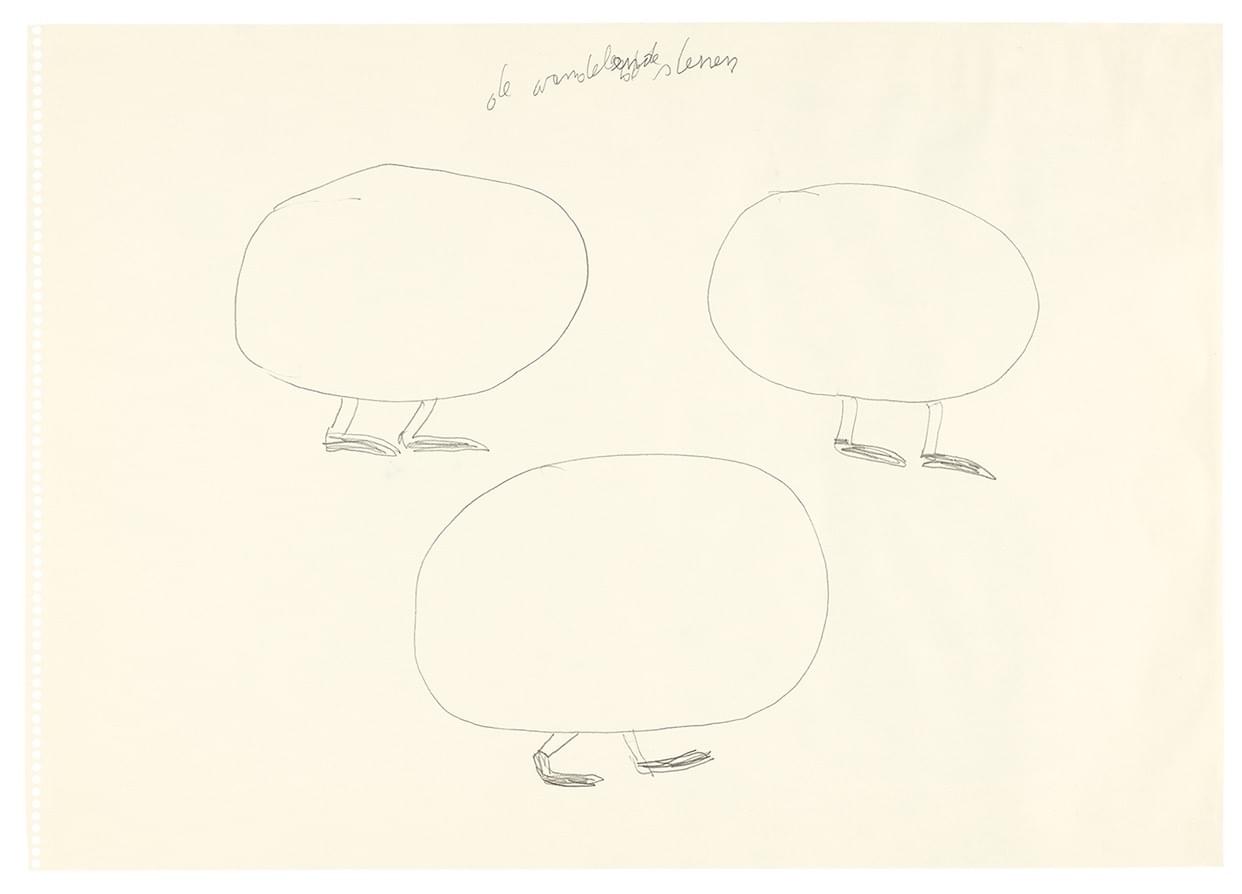
Fig. 13 Philippe Vandenberg, No title (De wandelende stenen [The Walking Stones]), 1997
Vandenberg’s equation between representation and abstraction is unstable. Inexorably we tend to discern the pattern in the carpet. (xlii) A sketchbook (1989–90) gives a clue. Erstwhile inert stony spheroids, the building blocks of a pictorial architecture, sprout dogs’ heads then insidiously turn into walking stones [fig. 13]. (xliii) Here, Paul Klee provides another clavis. He constantly mingled allusion and abstraction to conjure an in-between fantasia, sometimes whimsical, sometime tense and ominous, but always unsettling pure form with poetic license so that control mingles with wayward anxiety. Klee’s Mask of Fear reads as a proleptic type for Vandenberg’s legged stones [1932; fig. 14]. Petrifaction hovers, by definition between the animate and the inanimate, as do Vandenberg’s metamorphoses. Fear eats the soul yet also, cathartic, sustains it.
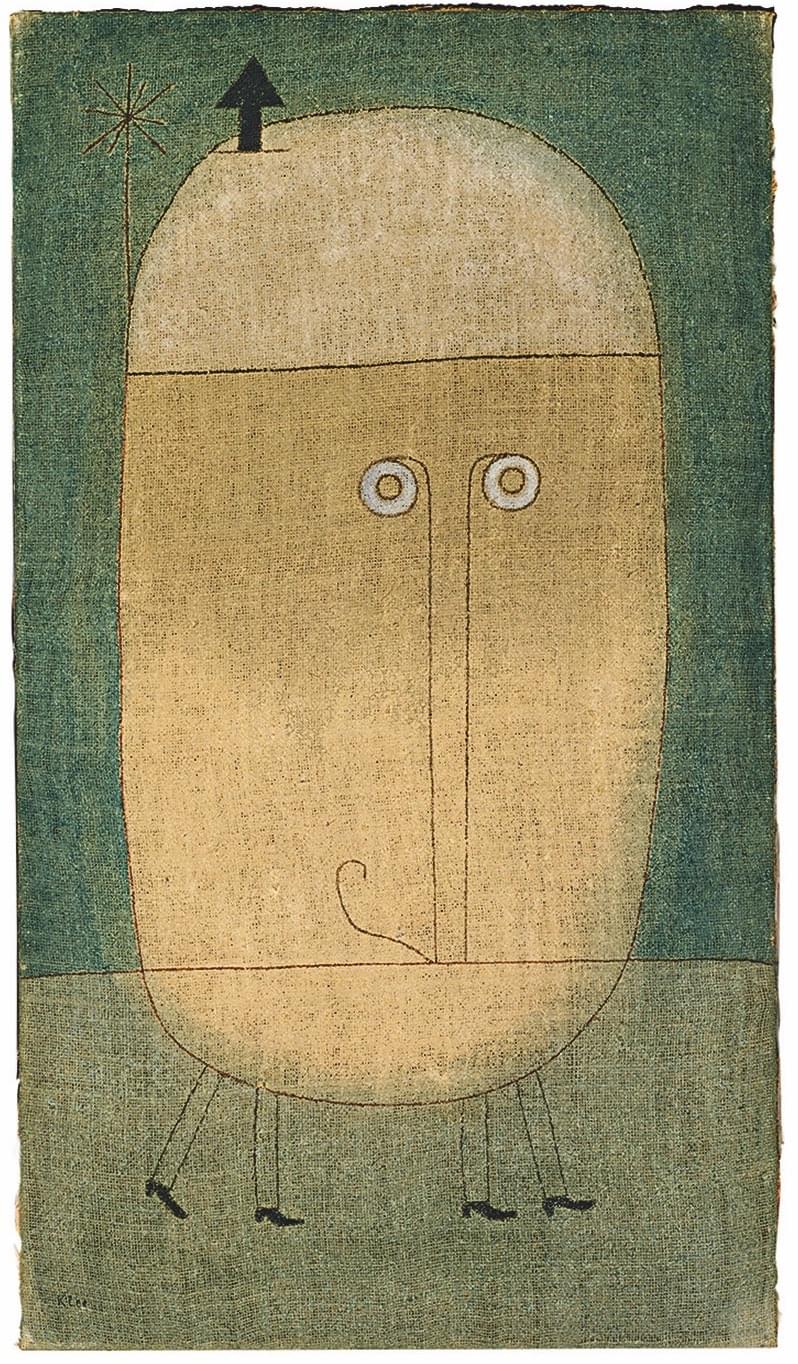
Fig. 14 Paul Klee (1879-1940), Mask of Fear, 1932
So in the end we behold two sides to our times and Vandenberg’s inner logic. The faces and phantasms of a long haul, stretching from the last century’s early cataclysms almost until now, perform their sinister masquerade. The Weimar Republic’s men with their wheelbarrows filled with impotent bank notes; Hitler as a lurching jack-in-the-box44; the naked Holocaust victims; a disfigured Ulrike Meinhof; George H. W. Bush (dubbed “le roi des cons”), who initiated the First Gulf War with its terrible domino effects that remain toxic now; Fidel Castro (to his credit, Vandenberg visited Cuba); Saddam Hussein; a grinning Yasser Arafat as the realpolitik einzelgänger; and the final appropriated command “Kill Them All!”—which can, and has been, uttered anywhere and everywhere from the fledgling Israeli state’s massacre of native Arabs to Pol Pot’s Cambodia and the Rwandan genocide. (xlv) Gathering these fragments, the artist upheld the rallying cry sounded in the spirit of ’68 that the personal is political. (xlvi) Trauma is the binder, a probable explanation for Vandenberg’s propensity for repetition both within and outside the bounds of his individual pieces. (xlvii) Indeed, at the age of five he began to draw in fright at his father’s anger towards his mother. (xlviii) Memory impels the compulsion to repeat.
Famously, language falters when beholding trauma, if it does not perish altogether. (xlix) Howsoever, at liberty it may either communicate at large or delimit our consciousness. (l) La misère de jour II [The Misery of the Day II, 1998–99; fig. 15] reaches this terminal stage. Four agonized heads make a daisy chain—nodes again—joined by the thorn-studded branch in their perforce speechless mouths. It is Vandenberg’s silent scream. Also, the unspoken text is vividly akin to Sylvia Plath’s poetic nightmares:
So I never could tell where you
Put your foot, you root,
I never could talk to you.
The tongue stuck in my jaw.
It stuck in a barbed wire snare.
Ich, ich, ich, ich,
I could hardly speak.
I thought every German was you.
And the language obscene. (li)
Plath’s troubled love-hate relationship with her father anticipates Vandenberg’s with his nasty, authoritarian paterfamilias. The dogs that his father bred and that his son had to bury when they were not up to scratch reappear as the fiendish animals haunting his corpus. Vandenberg spares us little, down to the naked men clutching their genitals in front of said lupine dogs (the SS made a fine point of training their Alsatians in the camps to bite the prisoners’ private parts). Overall, this is our modern hell writ large. (lii) R. B. Kitaj’s If Not, Not bears witness to its commonality: the gatehouse for the railroad tracks that led into Auschwitz (its dark “mouth” kin to the curve-topped cremation ovens with their chimneys that Vandenberg depicted), (liii) the scattered bodies and heads, the multitudinous pictorial incidents, the grim grotesquerie, and the pervasive atmosphere of excess allied to ruination [1975–76; fig. 16]. (liv)
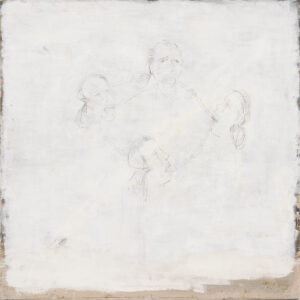
Fig. 15 Philippe Vandenberg, La misère du jour II (The Misery of the Day II), 1998-99
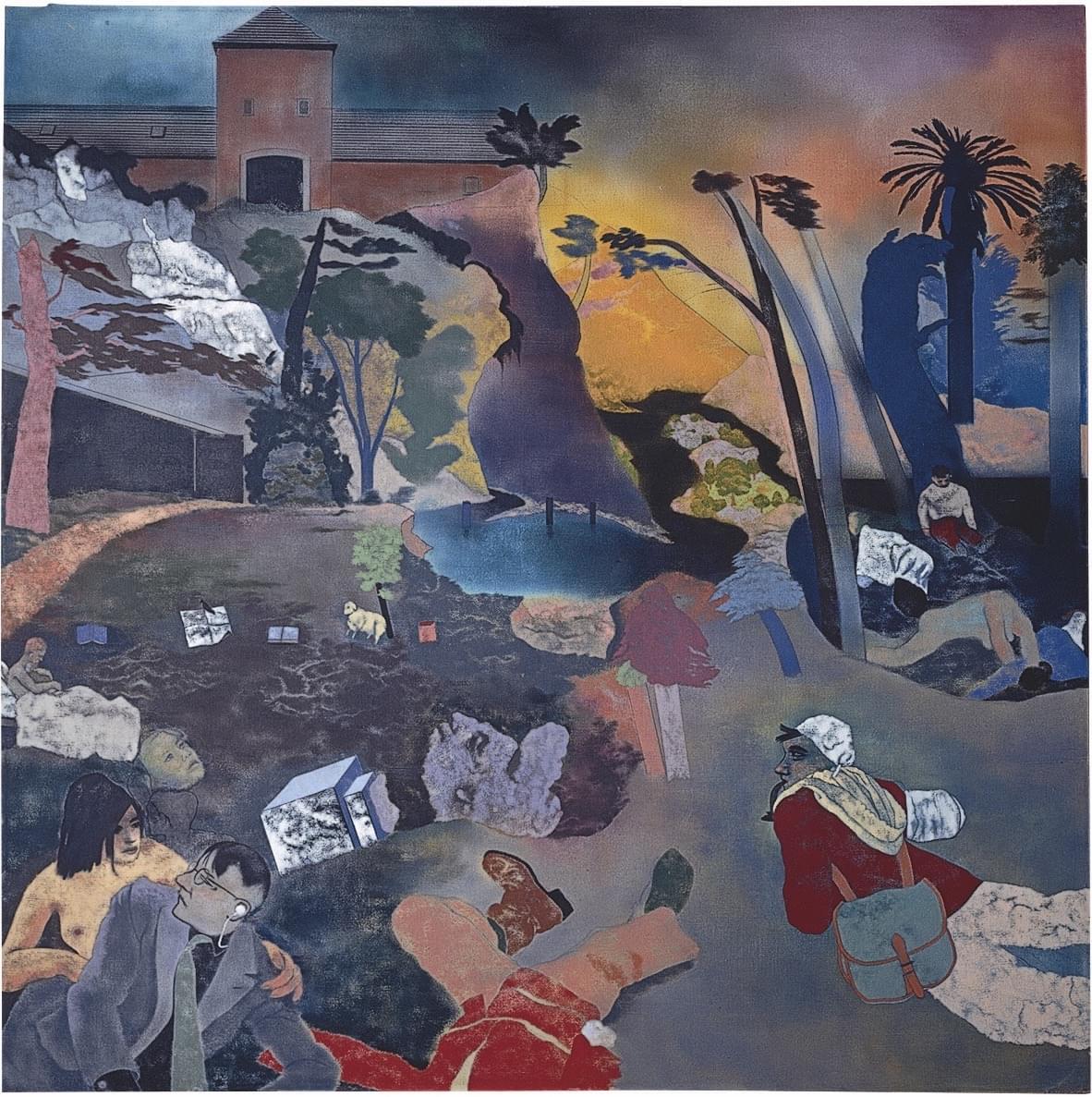
Fig. 14 R. B. Kitaj (1932-2007), If Not, Not, 1975-76
But neither does Vandenberg spare himself. This pitiless excoriation and self-exposure yield his ultimate artistic triumph because it speaks truth to power. Simultaneously, it puts him in the company of such modern selfsacrificing figureheads as Van Gogh, the Parisian peintres maudits, and subsequently the French actor-cum-theorist of the stage, Antonin Artaud. Performativity links Vandenberg’s visual arena with Artaud’s theatrical one. Cruelty is the measure for their mutual courage and convictions. For both, the depiction of others resembles a mirror to their own inner selves. Artaud’s “Van Gogh, the Man Suicided by Society” provides a blueprint of sorts to Vandenberg’s eventually tragic yet heroic quest. (lv) Madness overtook Artaud. When Vandenberg’s tenor approaches the pathological—as in his repeated words that are like the moment in The Shining (1980, dir. Stanley Kubrick) where the demonically possessed main protagonist’s presumed literary opus is revealed to be a single trite line typed over and again—it resonates with a frisson at once chilling and tonic, as though with the force of an imperiled mind laid bare [fig. 17]. (lvi) As Susan Sontag observed, “Artaud opposes the separation between art and life, he opposes all theatrical forms that imply a difference between reality and representation,” adding that “Writing is conceived of as an unpredictable flow of searing energy; knowledge must explode in the reader’s nerves.” (lvii) Her subject might as well have been Vandenberg, whose fragile, sketchy draftsmanship served like a neurological tracery. (lviii) Even the ubiquitous violence belongs to a modern moral-aesthetic imperative that uses it as a device to break through convention to authenticity—from Charles Baudelaire’s shocking, visceral poem “Une charogne” with its decomposing carcass in Les fleurs du mal (1861) to, say, W. B. Yeats’s revelatory temper:
Know that when all words are said
And a man is fighting mad,
Something drops from eyes long blind . . .
Even the wisest man grows tense
With some sort of violence
Before he can accomplish fate,
Know his work or choose his mate. (lvix)
Stirred to such passion, Vandenberg wrote in a sketchbook (March 2009): “To die of anger.” (lx) However, in a counter move, order enters the scene from all quarters. It completes the overarching dialectic.
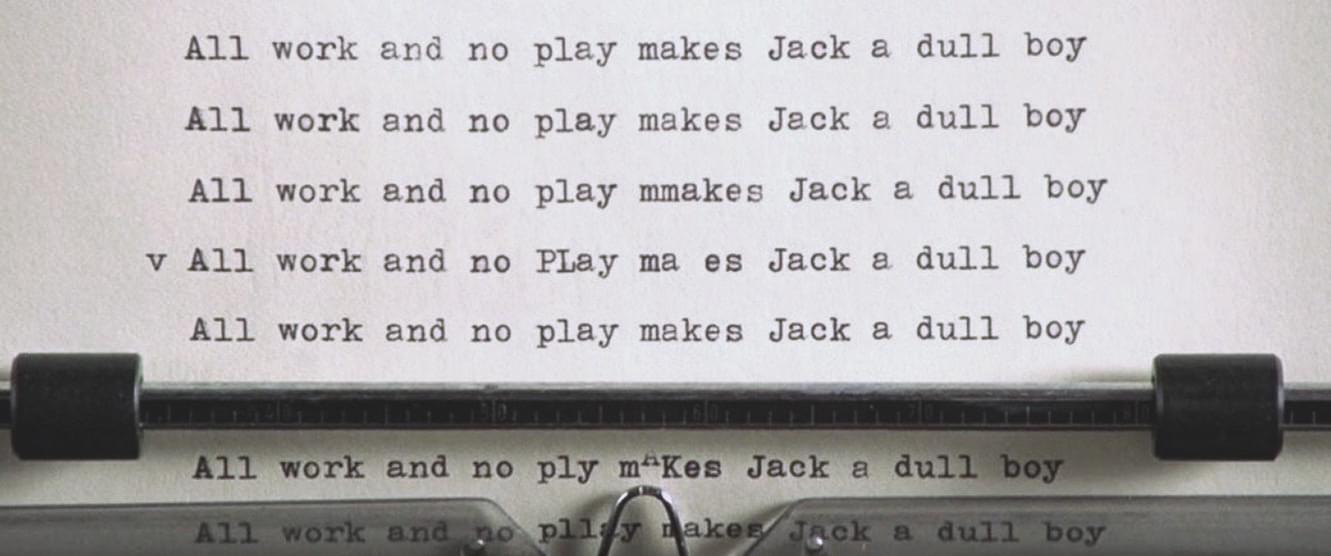
Fig. 17 Frame shot from The Shining (1989, dir. Stanley Kubrick)
By “order” Vandenberg meant several things. It could be fatal, the order due to the cross, both theological and geometric: “the crucified man is nailed to the order.” (lx) A searing precedent for such hyper-edginess was when Frank Stella identified his iconic, die-stamped geometries with a “final solution” to his paintings’ ordonnance, as in Die Fahne Hoch! (1959) with its caustic title and Getty Tomb [1959; fig. 18]. (lxii) The resemblance to Vandenberg’s passage to and fro between the worst dystopia and abstract reification—another sketchbook embellishes the word Endlösung (“final solution”) with a colorful zigzag armature as though it were some medieval manuscript’s ebullient carpet page—remains uncanny. Freed from its existential furnace, “order” came to furnish Vandenberg’s deepest faith in art. His pronouncements proliferate with this redemptive sentiment, which he kept in fruitful irresolution against its alternatives. For instance:
There are several kinds of order. There is the daily, visible, material order. Art, however, is about a different kind of order. An order that’s concerned with questions: how do I situate myself in existence, how do I set myself free from the oppression of the existing order? . . . On entering my studio some people might remark that it’s full of chaos. To me, however, that is not the case: there is a clear order, down to the minutest details. But that order moves each day, it is never definitive. (lxiii)

Fig. 18 Frank Stella (b. 1936), Getty Tomb, 1959
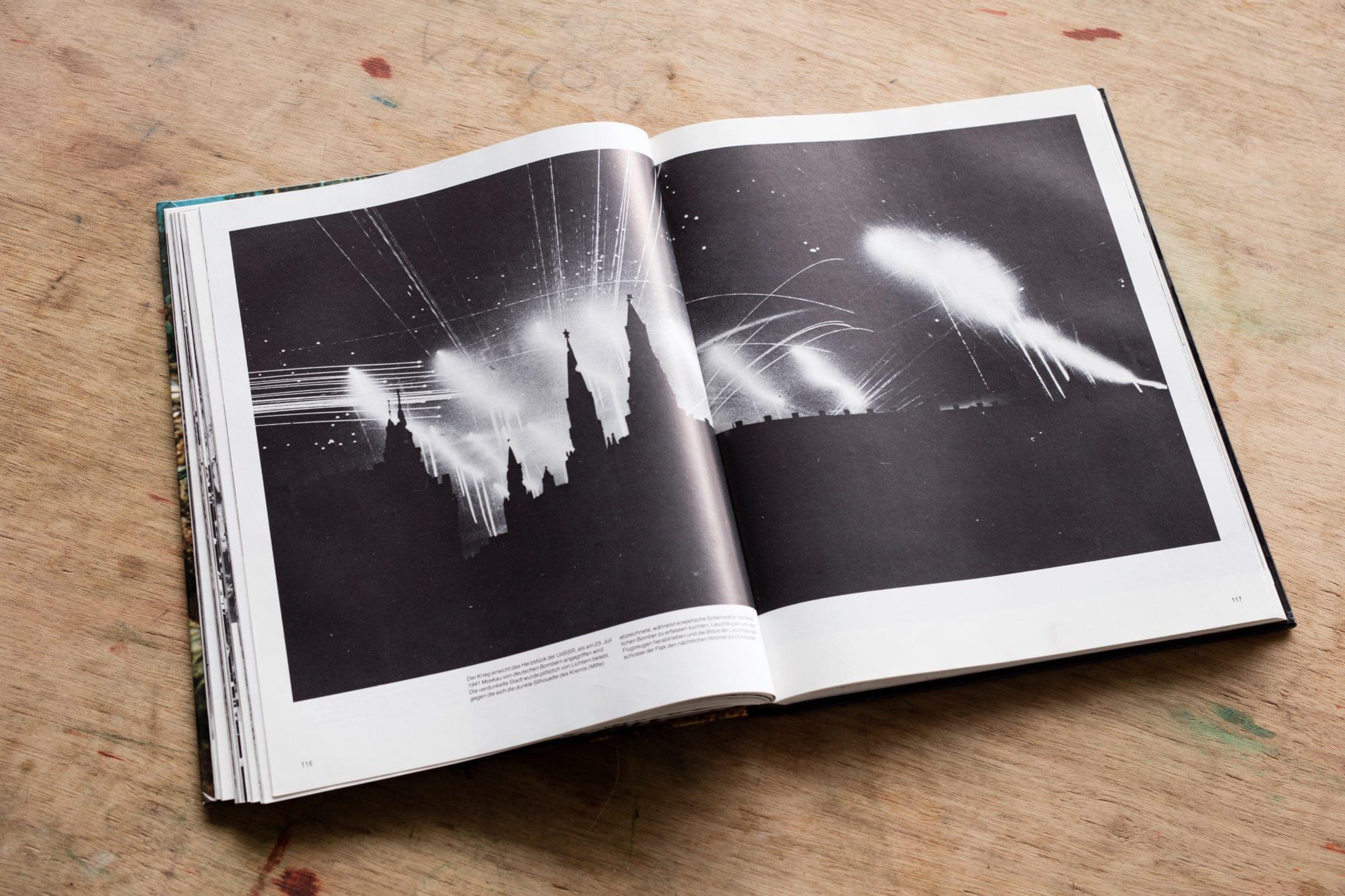
Fig. 19 Spread of LIFE magazine showing Margaret Bourke-White’s photograph of the aerial warfare and flak patterns over Moscow with silhouette of the embattled Kremlin lit up by flak from Russian anti-aircraft tracer bullets and seven Nazi parachute flares to provide light for bombardiers during German bombing raid on the city in July 1941
Order, then, for Vandenberg looked as open-ended as life. It might be as fitful and born of violence too. A photograph in a book with Time-Life pictures—shots he collected throughout his career and used for reference in his studio—in his personal library plucks the essence. In the titanic Soviet battle to save Moscow from the Nazis’ onslaught, an aerial conflagration of flak, explosions, and worse transfigures into a sudden beauty, lit with orderly lines and arcs [1941; fig. 19]. Surely it is somewhere in the genesis to the luminous, if fraught, linear network in Exil de peintre. A cruel struggle yields a homeopathic and reparative recreation in paint, frightfulness re-enchanted almost by magic into psychic, crafted energy. Vandenberg discerned the knife-edge push-and-pull, already familiar from Artaud’s example: “Or you use despair as a kind of fuel. Despair feeds resistance. As it does in politics, or religion.” (lxiv) Nietzsche’s thesis in The Birth of Tragedy, proposing that the Apollinian orderliness of classical Greek art grew from the Dionysiac “terror and horror of existence,” is not so distant either. (lxv) Nor is the conclusion reached by the literary critic and philosopher George Steiner, who more than most cultural commentators has pondered on the terrors of modern history and their consequences for humanity:
Much has been said of man’s bewilderment and solitude after the [secular] disappearance of Heaven from active belief. We know of the neutral emptiness of the skies and the terror it has brought. But it may be that the mutation of Hell into metaphor is the more severe dislocation. It may be that the mutation of Hell into metaphor left a formidable gap in the co-ordinates of location, of psychological recognition in the Western mind . . . In our current barbarism an extinct theology is at work. (lxvi)
The potent lesson of Vandenberg’s coruscating achievement may be that if we cannot have a heaven on earth, we may as well have a moral purity, a bid for order against perdition, in art.
Notes
The epigraph to this text is taken from Bernard Dewulf, “Philippe Vandenberg in Conversation with Bernard Dewulf,” in Philippe Vandenberg: “Visite,” ed. Anja de Lannoy (Ghent: Museum voor Schone Kunsten Gent, 2008), 42.
i. Respectively, the references are to: Germanic, as opposed to Latin, Europe; the Belgian Congo; the Battle of Waterloo; World Wars I and II; the Third Battle of Ypres, often known just as “Passchendaele” (the town itself was razed and the carnage included a founding instance of chemical warfare); the evacuation of the British Expeditionary Force at Dunkirk (1940), one of the largest ever; and the infamous Marc Dutroux, as well as the “Brabant Killers” and András Pándy, in addition to other psychopathic multiple crimes.
ii. On this score, splendiferous Antwerp trumps gloomy Brussels outright.
iii. Firstly, Jean-Claude Van Damme and Georges Simenon. Secondly, noir belge, used since Roman antiquity and even in the Taj Mahal and the Palace of Versailles. It remains among the most expensive marbles in the world.
iv. That Vandenberg self-evidently (as the works attest) wrote in Dutch, French, English, and German reflects his nation’s cultural melting pot.
v. Philippe Vandenberg, interview with Ronny Delrue (2008), unpublished typescript, unpag.
vi. Napoleon completes the genealogical triumvirate, likely indicative of Belgium’s occupying the aforementioned divide between a Latin South and a Germanic North (Hitler).
vii. A leading person in the Brussels art world described the place to me as an existential “no-man’s land,” and on my only visit to Liège it felt, despite the highly axial location, as though I were a million miles from nowhere.
viii. W. H. Auden, “Brussels in Winter” (1938), in W. H. Auden: Collected Shorter Poems 1927–1957 (London: Faber and Faber, 1966), 123. More famously, the same poet’s “Musée des Beaux Arts” (1938) addresses perennial human suffering.
ix. Another nodal arrangement.
x. Also, on a point of detail, Étude pour Artaud (Study for Artaud) (1998–1999– 2001) must acknowledge Gerard David’s Flaying of Sisamnes (1498; right panel of The Justice of Cambyses), Groeningemuseum, Bruges.
xi. Delrue, interview (2008).
xii. As written across Honte (1996–97).
xiii. See Walter Gibson, Bruegel (London: Thames & Hudson, 1977), 77–78. Evident in Bosch’s Last Judgment (after 1482) and a myriad other Netherlandish paintings.
xiv. Although quasi-blasphemous to modern eyes, this appropriation conforms to the mendicant orders’ religious concept of the imitatio Christi prevalent during the period. Both attitudes might have appealed to Vandenberg. See Jeffrey Chipps Smith, Dürer (London & New York: Phaidon Press, 2012), 144–50.
xi. David Anfam, “De Kooning, Bosch and Bruegel: Some Fundamental Themes,” The Burlington Magazine 145 (October 2003): 705–15.
xvi. Willem de Kooning, “Conversation with Bert Schierbeek” (1969), in George Scrivani, ed., The Collected Writings of Willem de Kooning (Madras & New York: Hanuman Books, 1988), 167. De Kooning’s paintwork renders his females kinesthetic. Vandenberg’s equivalent is anatomy in perpetual flux.
xvii. Ibid., 56.
xviii. It truncates Christ’s body from above the legs—thereby insinuating a deus absconditus—and replaces the “INRI” nailed to the cross with “MERCI,” another deft, pungent wordplay. Zot belongs to de Kooning’s recurrent Crucifixion-related pictorial details and thoughts.
xix. Anfam, “De Kooning, Bosch and Bruegel,” 710–11. Cf. also 1 Corinthians 3:18–19: “If any man among you seemeth to be wise in this world, let him become a fool, that he may be wise. For the wisdom of this world is foolishness with God.”
xx. John Elderfield, et al., De Kooning: A Retrospective (exh. cat., New York: Museum of Modern Art, 2011), 247.
xxi. Vandenberg in conversation with Ronny Delrue (2007–08), in Philippe Vandenberg nodigt Marc Maet uit (exh. cat., Asse: Gallery De Ziener, 2008), unpag.
xxii. De Kooning, “From a Film Script” (1960), in Scrivani, The Collected Writings of Willem de Kooning, 177.
xxiii. De Kooning, “Statement” (n.d.), in Margaret Staats and Lucas Mathiessen, “The Genetics of Art,” Quest 77 (March/April 1977): 70.
xxiv. As it does in Lucian Freud’s work and, differently, that of Frank Auerbach. Vandenberg surely knew and admired the first.
xxv. See Daniel O. Dahlstrom, The Heidegger Dictionary (London, New Delhi, New York, & Sydney: Bloomsbury Academic, 2013).
xxv. That Heidegger was an unrepentant Nazi carries a double-edged thrust in the current context.
xxvi. Julia Kristeva, Powers of Horror: An Essay on Abjection, trans. Leon S. Roudiez (New York: Columbia University Press, 1982), 3.
xxvii. “Le sujet en procès.” See Kristeva, Revolution in Poetic Language, trans. Leon S. Rudiez (New York: Columbia University Press, 1984), 22. The evolution of this fluid “subject” between, according to Kristeva, “semiotic” and “symbolic” modes corresponds roughly to Vandenberg’s oscillation between inchoate figuration and revisionary abstraction.
xxviii. Vandenberg, in A. Tourneux, ed., Philippe Vandenberg: Œuvre 2000—2006 (Ghent & Charleville-Mézières: Musée Arthur Rimbaud, 2006), 24.
xxix. Ibid., 24.
xxx. Clyfford Still, unpublished typescript (1950), unpag. (Clyfford Still Museum Archives, Denver).
xxxi. Ibid.
xxxii. The affinity between such paintings as Untitled (2002) and Ross Bleckner’s pictorial responses, starry and nocturnal, to the AIDS years may reflect a mutual endeavor to illumine societal catastrophe.
xxxiii. Dylan Thomas, “Do Not Go Gentle into That Good Night” (1947), in Dylan Thomas: Collected Poems 1934–1953 (London: J. M. Dent & Sons, 1952), 116.
xxxiv. Conforming to Kristeva’s notion of “the horror within” that threatens to transgress boundaries; Kristeva, Powers of Horror, 1982, 53, 114.
xxxv. See Barbara Rose’s excellent “The Meanings of Monochrome,” in Valeria Valis and Paul Rispa, eds., Monochromes: From Malevich to the Present (Berkeley, Los Angeles, & London: University of California Press, 2006), 21ff.
xxxvi. Ad Reinhardt, “Black” (n.d.), in Barbara Rose, ed., Art as Art: The Selected Writings of Ad Reinhardt (Berkeley & Los Angeles: University of California Press, 1975), 97–98.
xxxvii. Hence, Vandenberg’s nod towards Philip Guston, who pitted the one against the other. Guston was also a practitioner, for example in his picture-poems, of the meeting of the word/image union.
xxxviii. The title Aimer c’est flageller II (1981–98) advances a pleasure/pain inversion, a Liebestod.
xxxix. The swastika is of course two-sided: an ancient symbol of the sun/life and a modern emblem of a totalitarian death drive.
xl. Wilhelm Worringer, Abstraction and Empathy: A Contribution to the Psychology of Style, trans. Michael Bullock (Chicago: Elephant Paperbacks, [1908], 1997), 134.
xli. E. H. Gombrich, The Sense of Order: A Study in the Psychology of Decorative Art (London: Phaidon Press, [1979], 1984). As their respective subtitles suggest, Gombrich’s book is, to a degree, the successor to Worringer’s, despite the former’s aversion to the latter’s German Expressionist leanings.
xlii. Henry James’s short story “The Figure in the Carpet” (1896) coined this telling phrase.
xliii. Here and elsewhere, Vandenberg’s attraction to Guston’s lumpen creatures surfaces.
xliv. Benito Mussolini assumes the same pop-up role in Peter Blume’s Surrealist political satire on Fascism, The Eternal City (1934–37).
xlv. Vandenberg collected umpteen press clippings of these conflicts and their “collateral damage” (to employ the hideous military terms for, well, wanton harm and slaughter). They remain, alongside his library, in his last studio situated in the Brussels neighborhood Molenbeek. The library includes diverse volumes that offer a window onto the artist’s thinking. Among them is the book Life im Krieg (1982) that contains the striking photojournalism recording nighttime aerial conflict above Moscow subsequently mentioned in this text. As for the neighborhood, one can only imagine how Vandenberg would have construed the recent media allegations that it is a hotbed for jihadist terrorism.
xlvi. It was actually first stated in a 1969 essay by the feminist Carol Hanisch. Whether or not Vandenberg was in synch with the rebellious year 1968, he doubtless knew the global upheavals that ensued in 1989.
xlvii. From Freud onwards, repetition has been interpreted as a hallmark of neurosis / trauma. If so, it may explain why Arshile Gorky constantly reworked and overpainted Portrait of the Artist and His Mother (1926–36)—the parent had starved to death during the Turkish genocide of the Armenians—and the incessant layerings visible in his late works on paper. Simply said, when we do not remember (due to a traumatic wound), we repeat.
xlviii. Vandenberg, “On his way in a cage is a man, his hands red,” in Philippe Vandenberg: Œuvre 1995–1999 (Antwerp: M HKA—Museum van Hedendaagse Kunst Antwerpen, 1999), 297.
xlix. Thus the Freudian concept of the “talking cure.” Cf. Primo Levi, If This Is a Man (London: Little, Brown, [1958], 1979), 32: “Then for the first time we [the concentration camp inmates] became aware that our language lacks words to express this offence, the demolition of a man.” For a Marxist critique of structuralist theories of language, see Fredric Jameson, The Prison-House of Language: A Critical Account of Structuralism and Russian Formalism (Princeton: Princeton University Press, 1972).
l. As deduced by Ludwig Wittgenstein, “The limits of my language mean the limits of my world.” Wittgenstein, trans. C. K. Ogden, Tractatus Logico-Philosophicus, 5.6 (London: Kegan Paul, Trench, Trubner & Co., 1922), 74.
li. Sylvia Plath, “Daddy” (1962), in Ted Hughes, ed., Sylvia Plath: Collected Poems (London & Boston: Faber & Faber, 1981), 223.
lii. The zeitgeist further compares with that of the brilliant film Europa (1991, dir. Lars von Trier).
liii. Here Kitaj invokes the ancient, initially Anglo-Saxon, mouth (“maw”) maw of Hell, which, inter alia, Bosch portrayed.
liv. Horror vacui, the grotesque, degradation, and excess constitute modalities of the carnivalesque. See Mikhail Bakhtin, Rabelais and His World, trans. Hélène Iswolsky (Bloomington & Indianapolis: Indiana University Press, [1965], 1984), and Timothy Hyman and Roger Malbert, Carnivalesque (exh. cat., London: Hayward Art Gallery, 2000).
lv. Artaud, “Van Gogh, the Man Suicided by Society” (1947), in Susan Sontag, ed., Antonin Artaud: Selected Writings (Berkeley: University of California Press, 1988), 483–512.
lvi. The aura of insanity to Théodore Géricault’s Portrait of a Kleptomaniac (1822) in Ghent’s Museum of Fine Arts fascinated Vandenberg.
lvii. Sontag, Antonin Artaud, 1988, xxxiv, xxiv.
lviii. Vandenberg’s oil portrait of his grandfather (1972), executed when he was eighteen, proves that he was nevertheless a precocious, skilled draftsman.
lix. W. B. Yeats, “Under Ben Bulben” (1936/39), in A. Norman Jeffares, ed., W. B. Yeats: Selected Poetry (London: Pan Macmillan, 1974), 206.
lx. Rothkoesque ruddy rectangles (with little feet to signal their literal and metaphorical animation) occur on another page.
lxi. Vandenberg, in Delrue, interview (2008).
lxii. See Harry Cooper and Megan R. Luke, Frank Stella: 1958 (exh. cat., Arthur M. Sackler Museum, Cambridge, Mass., 2006), 30–33.
lxiii. “Philippe Vandenberg in Conversation with Bernard Dewulf.” See Martin Esslin, Artaud (Glasgow: Fontana/Collins, 1976), 71 et passim.
lxiv. “Philippe Vandenberg in Conversation with Bernard Dewulf.”
lxv. Friedrich Nietzsche, The Birth of Tragedy Or: Hellenism and Pessimism, trans. Walter Kaufmann (New York: Vintage Books, [1972], 1967), 42.
lxvi. George Steiner, In Bluebeard’s Castle: Some Notes Towards the Re-definition of Culture (London & Boston: Faber & Faber, 1971), 48. See also the rather less trenchant Teofilo F. Ruiz, The Terror of History: On the Uncertainties of Life in Western Civilization (Princeton & Oxford: Princeton University Press, 2011).
In addition to Wouter Davidts’s editorship and the nimble team at Hauser & Wirth, I would particularly like to thank Guillaume, Mo, and Hélène Vandenberghe for their generous help with the preparation of this essay.
Type:
- Essay
Authors:
- David Anfam
Language:
- English
Year:
- 2017
Published in:
David Anfam. “Angst and Order.” In Philippe Vandenberg: Absence, etc., edited by Wouter Davidts, 57-70. New York: Hauser & Wirth Publishers, 2017.
Originally published as:
Idem